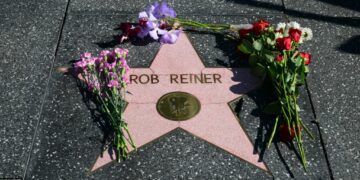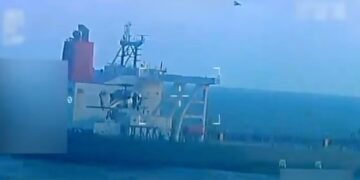By John F. Di Leo, Opinion Contributor
I am told that there is a saying in the used car business: “Nothing is more expensive than a cheap Mercedes.”
That’s not to say that it’s not possible to get a good price on a used Mercedes. It probably is.
But the buyer must remember that people who buy new luxury cars are people who can afford the repairs on them. And even though that used car may be cheaper than a new car, once it’s in your possession, everything else that goes wrong, from brakes to HVAC, from shocks to transmissions, is going to cost you just as much as it would’ve cost the guy who could afford a new Mercedes.
In other words, no matter what you purchase, no matter how good a deal it may be, you must think long-term about the costs of upkeep and the long-term risks associated with it. If you can’t afford the sorts of things that might happen to it during the course of your ownership, then you really can’t afford the product in the first place.
Consider earthquake zones. People get in the habit of building to certain standards when properties lie on a fault line. You’re not just building a foundation, walls, and ceiling to handle the everyday; you are building to withstand the possibility of an earthquake, because you know it’s more than just a possibility there; it’s almost a certainty.
If you can’t handle that risk, you build somewhere else.
Sometimes, the government messes with the market, and changes these calculations. People build in flood zones, and then the government, unwisely but “generously,” sometimes rebuilds, even though the homeowners knew it was a flood zone when they built there in the first place.
The generous expenditure of other taxpayers’ money, in such cases, warps the market, warps people’s judgment, and ultimately causes unwise and costly choices.
Such practices should be discouraged. A responsible government should never reward bad choices.
The port of Baltimore suffered a multi-billion-dollar accident at midnight, as March 25 became March 26, when a containership, the Maersk-leased Dali, crashed into one of the supports of the Francis Scott Key Bridge, sending the entire structure into immediate collapse.
It is too soon to assess blame. As we go to press, experts are studying the wreckage, the videos, and the communications that preceded the destruction. Was it terrorism or just a terrible accident? Possibilities range from mechanical failure or onboard sabotage to a distant computer hack.
But no matter what the cause was, we now know certain things for sure:
• This bridge cost $110 million to build, 50 years ago. It will cost at least 1 billion to replace today, most likely much more than that.
• The world survived without this bridge until 1977. While we have spent 47 years getting used to having it there, we will have to spend at least the next several years living without a bridge there.
• As soon as architects and politicians started turning on their laptops, the next morning, people began to plan for the design, funding, and construction of a replacement bridge.
• And very few people will ask the question that needs to be asked:
“Should it really be rebuilt?”
Every bridge has a purpose. For thousands of years, bridges have been built to carry pedestrians, bicyclists, cars and trucks, or trains. As those crossing the bridges have changed, so too have the risks.
The Francis Scott Key Bridge was built to shorten the driving time from one side of the port to the other, so that people would no longer have to drive around the port. Well, for at least the next few years, people will have to get used to driving around it again.
And the proper public policy question must be asked: Is it worth the risk, now that we know what that risk is?
Sometimes, such questions are answered in the context of mixed funding sources. Maybe it wouldn’t be worth $1 billion to the drivers who cross the bridge; maybe it wouldn’t be worth $1 billion to the city of Baltimore; maybe it wouldn’t be worth $1 billion to the state of Maryland.
But what if the city and state split the cost with the port authority and the federal government? What if some complex deals were set up where a tollway might cover another quarter of the cost?
When such conversations are held, suddenly, all the risk is put to the side. Suddenly the big picture is forgotten, and it becomes a big shell game. Share the cost among enough different parties, preferably parties who either won’t be able to vote on it at all or will be given the impression that they are coming out ahead, by all the other funding sources sharing the cost with them.
That always works, with highways, stadiums, recreation centers, and more.
But what’s to say that this won’t happen again? Now that we know the risk, we must ask that question.
If we rebuild a bridge in front of a huge seaport, with several massive ships – container ships, brake bulk vessels, cruise ships, RO-RO vessels – crossing back and forth under the bridge every day, who’s to say that another ship, five years from now, won’t crash into it again? And then another, four years after that?
We don’t build an enormous bridge encircling the port of Los Angeles that ships must travel under, back-and-forth, every hour. The risk of a collision is simply too great with that kind of traffic. Why do we do it in Baltimore?
The responsible question for Baltimore must be this: not how to fund the bridge, not how to design it, but does it really make sense at all, considering the possibility that such a collision could happen again?
Government never asks these questions. Government always believes that the next thing must be at least as good as the thing it replaces – preferably bigger, preferably fancier, preferably more expensive.
It is time for American governments at every level to stop thinking like that.
The public treasury has been bankrupt for generations. We are over 100 trillion in debt at the national level alone when you count unfunded mandates; most big cities and states are in proportionately similar shape.
Massive public building projects – such as bridges and stadiums – are in many ways that same “cheap Mercedes” of legend: a project that you might be able to put together the funding to buy in the first place, but you can’t possibly afford to keep, once something goes wrong.
How often have we seen a city or state bankrupt its taxpayers to build a stadium, only to see the team move across the country ten years later? How often have we seen a massive convention center built, only to find the big shows switching to other venues for reasons out of their control, leaving an empty, taxpayer-funded white elephant in their midst?
Baltimore needs to look at its future and accept the fact that it probably cannot safely enjoy both a billion-dollar bridge and a busy seaport with vessel traffic running under it every few hours. We now know the risk is too great.
Baltimore is a great seaport in some ways – the best in the nation for RO-RO vessels and heavy bulk shipping. Perhaps the 695 bridge is just a luxury that a state in debt with a busy seaport cannot afford.
Think how highly the establishment would rise in our collective esteem, if they stood up to do the responsible thing, and said, for once, “We are going to put the economic health of the country first; we are going to do without this bridge from now on.”
Considering the herds of hogs, termites and leeches who normally populate America’s many bureaucracies, wouldn’t that be a breath of fresh air?
Copyright 2024 John F. Di Leo
John F. Di Leo is a Chicagoland-based trade compliance trainer and transportation manager, writer, and actor. Once a County Chairman of the Milwaukee County Republican Party in the 1990s, after serving as president of the Ethnic American Council in the 1980s, he has been writing regularly for Illinois Review since 2009. His book on vote fraud, “The Tales of Little Pavel,” and his three-volume political satires of the Biden-Harris regime, “Evening Soup with Basement Joe,” are available in eBook or paperback, only on Amazon.
Don’t miss an article! Click the Subscribe button to sign up for Illinois Review’s free notification service, so you always know when IR publishes new content!
By Amanda Szulc, Opinion Contributor "Return to Innocence." It is not simply the title of a song by Enigma. It has become a plea — a sober call...
Read moreDetails








